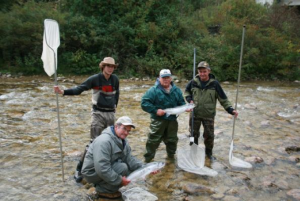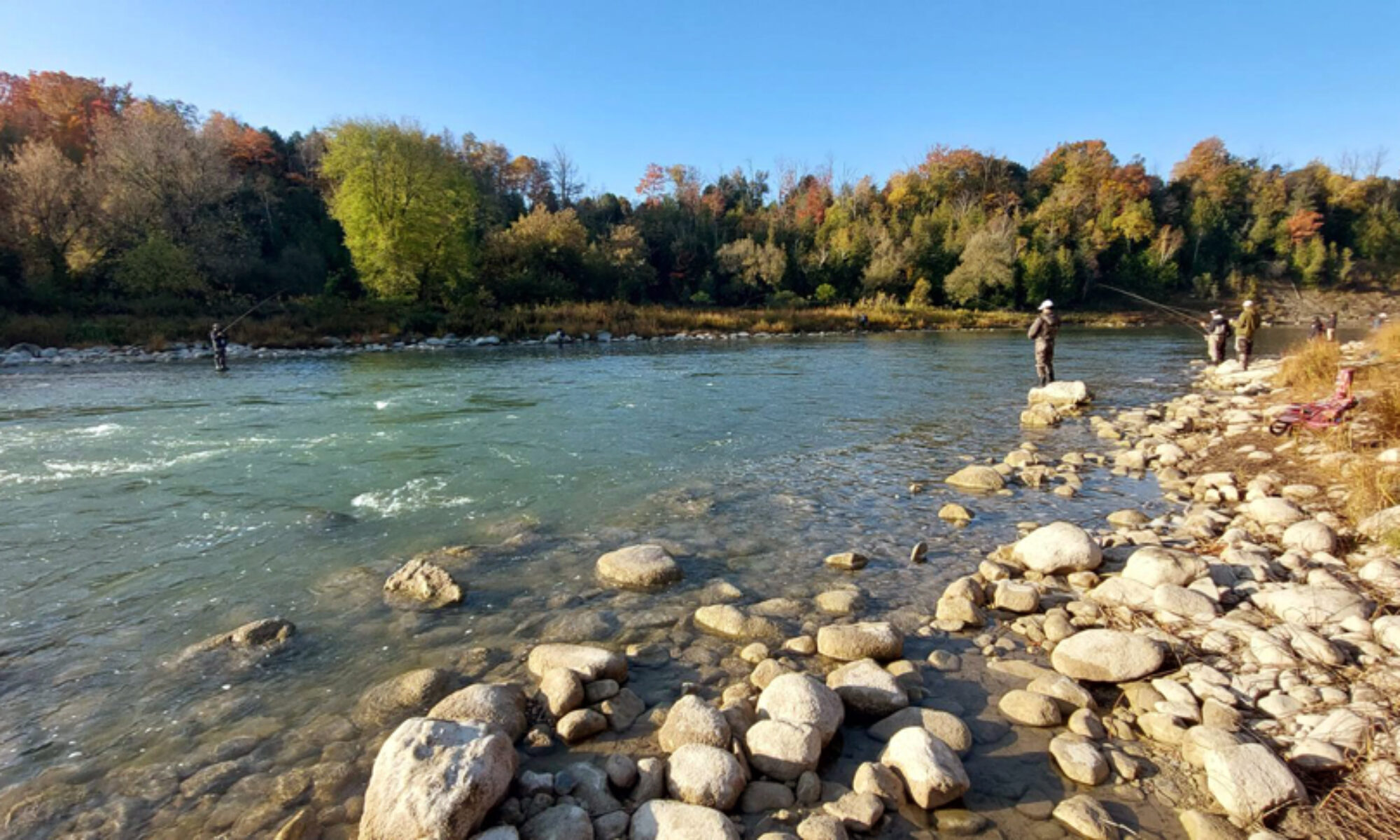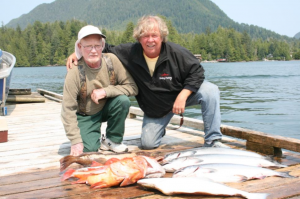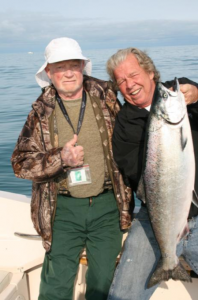I had to pity poor Pete Gilles and his partner standing and struggling a dozen feet below me in the trap at Denny’s Dam. They were both in almost waist deep water with roughly five hundred excited steelhead, splashing and thrashing around them. It was obvious that the Saugeen steelhead run was booming and that all the hard work carried out by the members of the Ontario Steelheaders and the Lake Huron Fishing Club was paying off in a big, big way.
So big in fact, it’s quite possible the Saugeen River just might be classed as having one of the biggest, if not the biggest runs of steelhead anywhere on the continent.
It hasn’t been an easy project to carry out. It takes work and then more work. Matter of fact, the dedicated members of both clubs have been collectively working their asses off for more than the last eight years to bring this program to fruition. These boys and girls don’t work a day or two or a month or two, but right around the calendar. That’s 365 days of the year and often under the worst of conditions.

- A fish going upriver via Steelhead Express
Let’s look at last autumn for example. First, the members of both clubs combined efforts to man the trap at Denny’s to collect 500 big, brawny adult steelhead for the transfer to the prime spawning grounds of the Beatty Saugeen. Why does it seem these fish almost always have to make their appearance when the temperature is freezing and the skies are their wettest? Trust me, it’s not easy to handle a hundred or more fish in a lift. Then there’s the cost of hauling those fish tankers back and forth numerous times a day from Southampton to Hanover. Oh, and don’t forget the wear and tear on the trucks that do the hauling and the burnt up transmissions that go with that wear and tear.
It’s not just moving adults that this program is all about. We raise approximately 50,000 to 60,000 of the finest looking 8 inch plus sized yearling steelhead smolts every year. That’s one hell of a lot of loving babysitting that is carried out by the members of the Lake Huron Fishing Club. Remember again, that we added those 65,000 advanced fall fingerlings to the hatchery count as well.
To get those fish raised over at Kincardine, both clubs also had to strip and fertilize a lot of unhappy and aggravated adult steelhead to obtain a total of almost 200,000 eggs and a great deal of milt to put in the hatchery in the first place.
It may seem like a lot of fun, but it’s not…it’s damn hard work. My hat goes off to those members of both the Ontario Steelheaders and Lake Huron Fishing Club that carry out that damn hard work
Over the winter, when others may be out ice fishing, the members of the Lake Huron Fishing Club and Ontario Steelheaders can be found back in the Kincardine Fish Hatchery clipping the dorsal fins off 50,000 or 60,000 steelhead fingerlings that have to be identified before spring stocking can commence. In the winter of 2011/2012 we increased the clipping program just a little. Thanks to a pre-arranged agreement with the Ontario Ministry of Natural Resources and the Ontario Steelheaders, the club was allowed to obtain additional eggs and a one-time stocking of 65,000 advanced fall fingerlings was allowed. The Lake Huron Fishing Club raised them and the members of both clubs did a hell of a lot more clipping over at the LHFC’s Port Elgin fish hatchery.
Then spring arrives and the climbing up and down in the trap, the netting and the lifting and trailering starts all over again. This time around, the target was set at 1,000 adults and we accomplished that number in three and a half days.

- Releasing Adult Steelhead
I’ve already mentioned Pete and his partner surrounded by 500 big fish. Well that happened back in March of this spring and the trap was only down in the water for a little over an hour. Over a four day period club members would lower the fish trap only three times a day for one hour intervals. Each of those lifts, on average, would capture more than 400 adult rainbows. On each of those lifts we generally had three trucks and fish tankers ready to transport approximately 130 adults upriver to the Beatty. As we made the convoy upstream to the Beatty, Grant McAlpine and his crew were still left to sample approximately 250-300 remaining fish for sex, ripeness and missing fin clips.
Now think on this real hard. We would only put that trap down for 3 hours a day and average more than 400 fish in each of three lifts. That means the trap was out and the fish were on swim-through for more than 20 hours a day. That run ran strong for almost three weeks. Do your math. That is one hell of a lot of fish that swam up out of that trap and all the way to Hanover.
It’s not just moving adults that this program is all about. We raise approximately 50,000 to 60,000 of the finest looking 8 inch plus sized yearling steelhead smolts every year. That’s one hell of a lot of loving babysitting that is carried out by the members of the Lake Huron Fishing Club. Remember again, that we added those 65,000 advanced fall fingerlings to the hatchery count as well.
To get those fish raised over at Kincardine, both clubs also had to strip and fertilize a lot of unhappy and aggravated adult steelhead to obtain a total of almost 200,000 eggs and a great deal of milt to put in the hatchery in the first place.
It may seem like a lot of fun, but it’s not…it’s damn hard work. My hat goes off to those members of both the Ontario Steelheaders and Lake Huron Fishing Club that carry out that damn hard work.
Darryl Choronzey
















